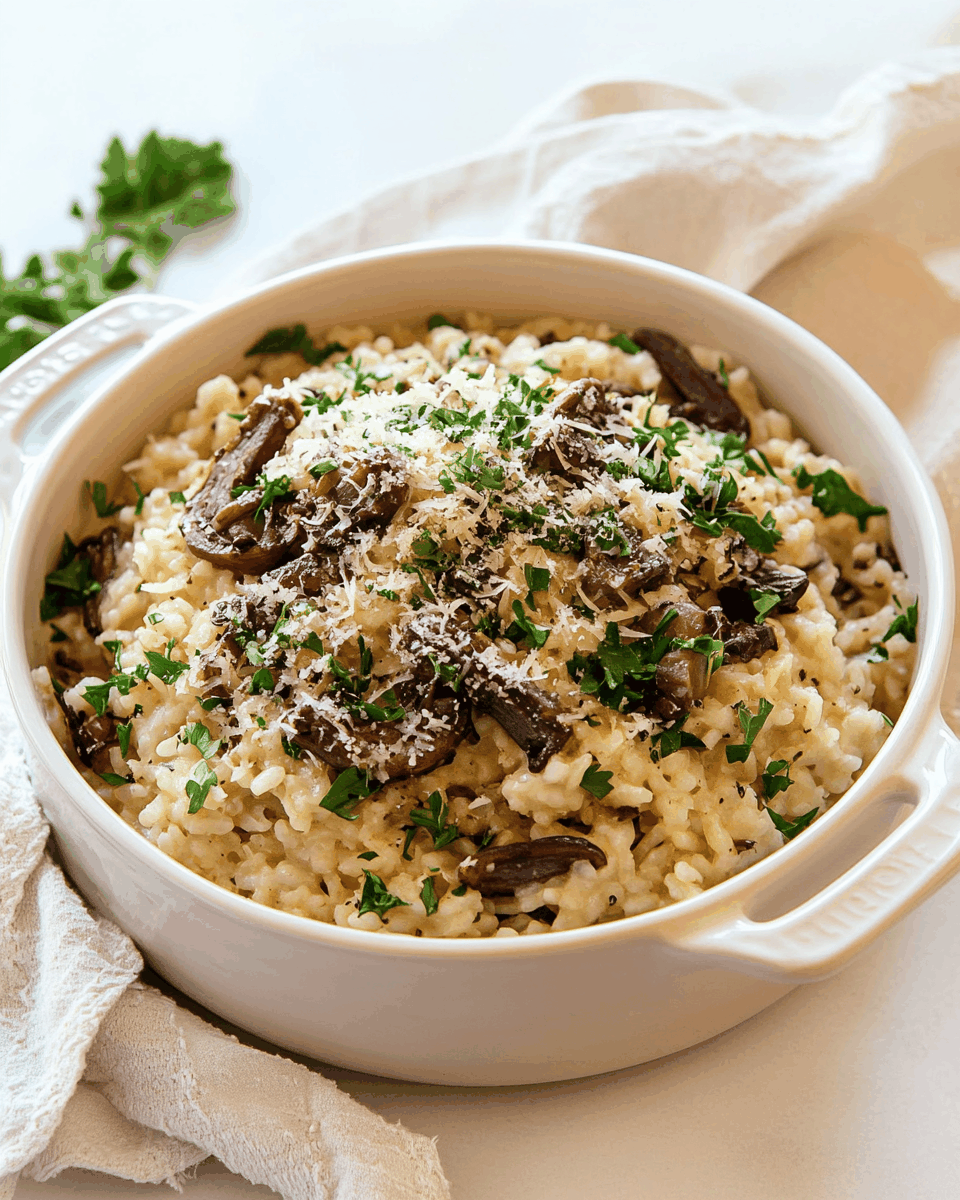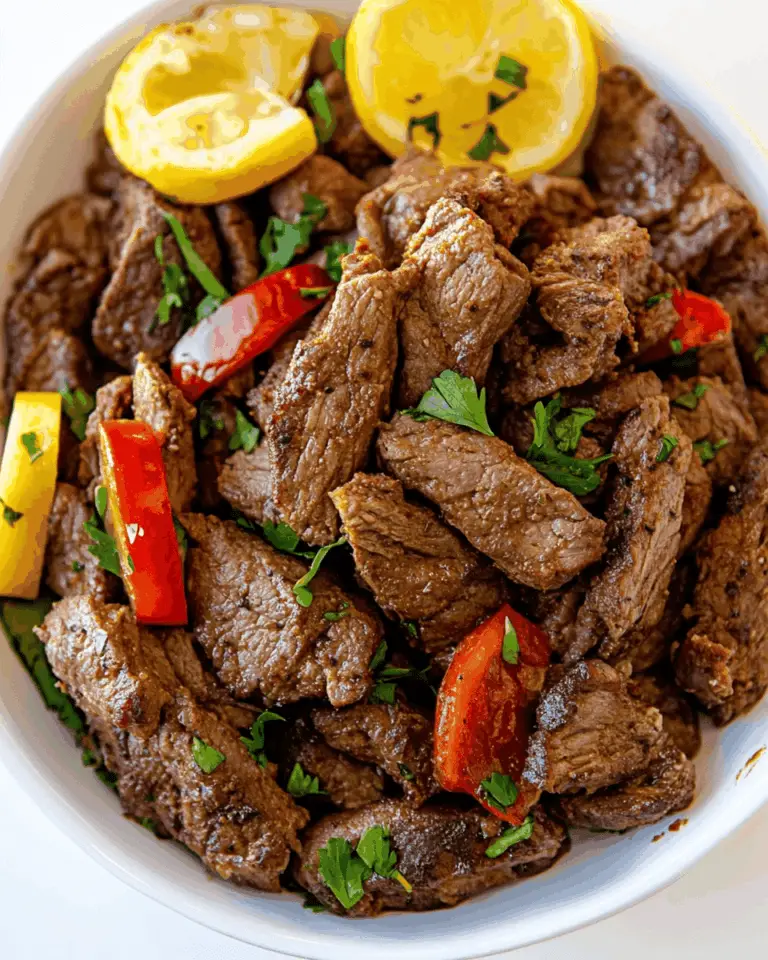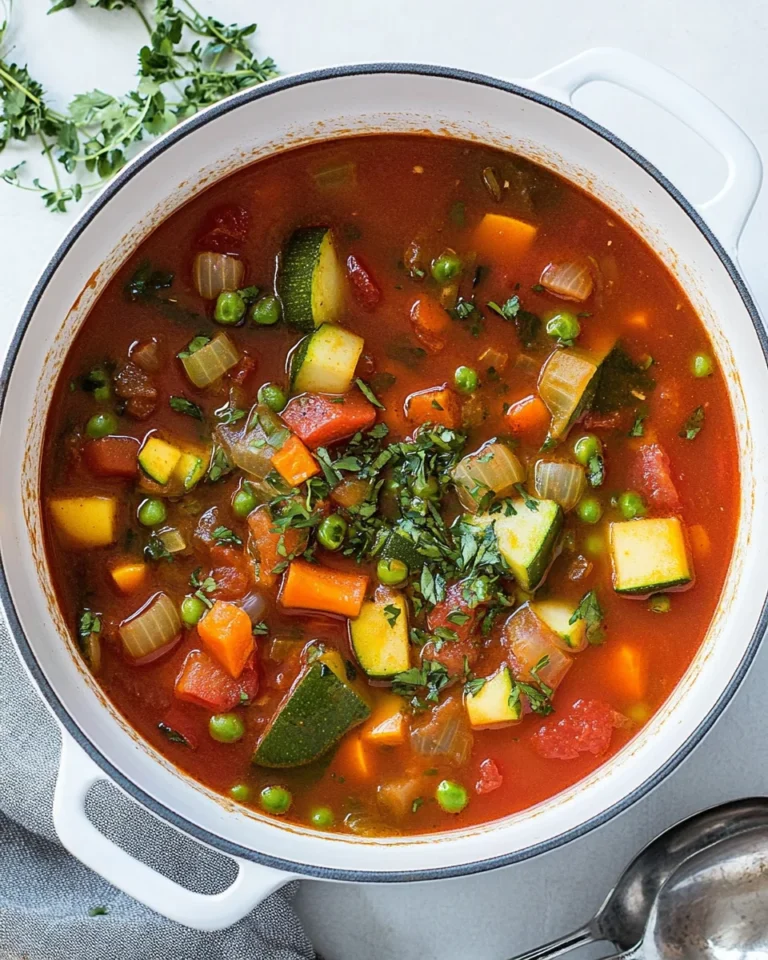Risotto
Risotto is a classic Italian dish that embodies comfort and sophistication in every creamy bite. Originating from Northern Italy, this dish is primarily made using Arborio rice, which is known for its high starch content that gives risotto its signature creamy texture. The beauty of risotto lies in its versatility; it can be prepared in countless ways, allowing for the incorporation of seasonal vegetables, proteins, and aromatic herbs. The slow-cooking technique involved in making risotto ensures that each grain of rice absorbs the flavors of the broth and ingredients, resulting in a rich, well-rounded dish. Whether served as a main course or a side, risotto is a culinary canvas that invites creativity and personalization, making it a delightful addition to any dining table. With just a few key ingredients and some attention to detail, you can create a risotto that will impress family and friends, bringing the warm essence of Italy into your kitchen.
Why You’ll Love This Recipe?
There are numerous reasons to embrace this risotto recipe, but here are some standout features that make it irresistible. First, the taste is unparalleled; the combination of creamy rice, savory broth, and your choice of fresh ingredients creates a symphony of flavors that is both comforting and satisfying. Second, the preparation process, while requiring some attention, is straightforward and allows for a rewarding cooking experience. As you stir the rice and watch it transform, you’ll find joy in the journey as much as the destination. Third, the aesthetic appeal of a beautifully plated risotto cannot be overstated. Its creamy texture and vibrant colors from added vegetables or herbs create a stunning presentation that enhances any meal. Finally, the adaptability of risotto means you can easily customize it to suit your taste preferences or seasonal ingredients, making it an all-year-round dish that never gets boring.
Ingredients:
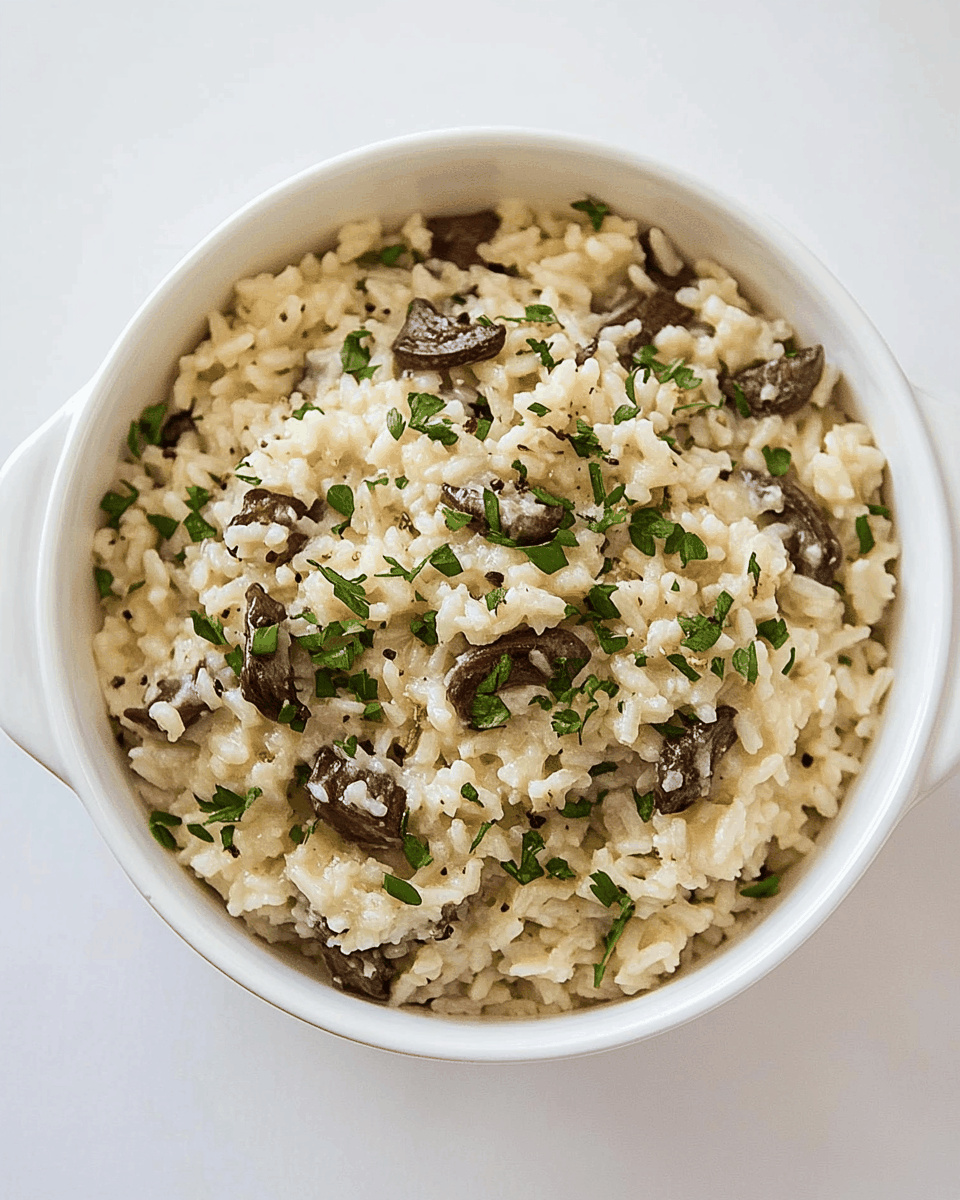
To make a classic risotto, you will need a handful of essential ingredients that come together to create this delightful dish. Here’s the complete list along with measurements and descriptions to guide you:
- 1 ½ cups Arborio rice – This short-grain rice is crucial for achieving the creamy texture characteristic of risotto due to its high starch content.
- 4-5 cups low-sodium vegetable broth – A flavorful base for cooking the rice; homemade or store-bought broth can be used, ensuring it is warm when added to the rice.
- 1 medium onion, finely chopped – Adds a subtle sweetness and depth of flavor to the dish.
- 2 tablespoons olive oil – A healthy fat used for sautéing the onions and starting the cooking process.
- 2 tablespoons unsalted butter – Adds richness and helps create a creamy texture in the finished dish.
- 1 cup grated Parmesan cheese – Enhances the flavor with a nutty, savory richness; use freshly grated for the best results.
- Salt and black pepper to taste – Essential for seasoning the dish to your preference.
- Fresh herbs (such as parsley or basil) for garnish – Adds color and freshness to the final presentation.
- Optional vegetables (like asparagus, peas, or mushrooms) – Incorporate seasonal vegetables to enhance flavor and nutrition.
- Optional protein (such as grilled chicken or shrimp) – Can be added for a heartier meal, giving you the flexibility to customize your risotto.
How To Make Risotto?
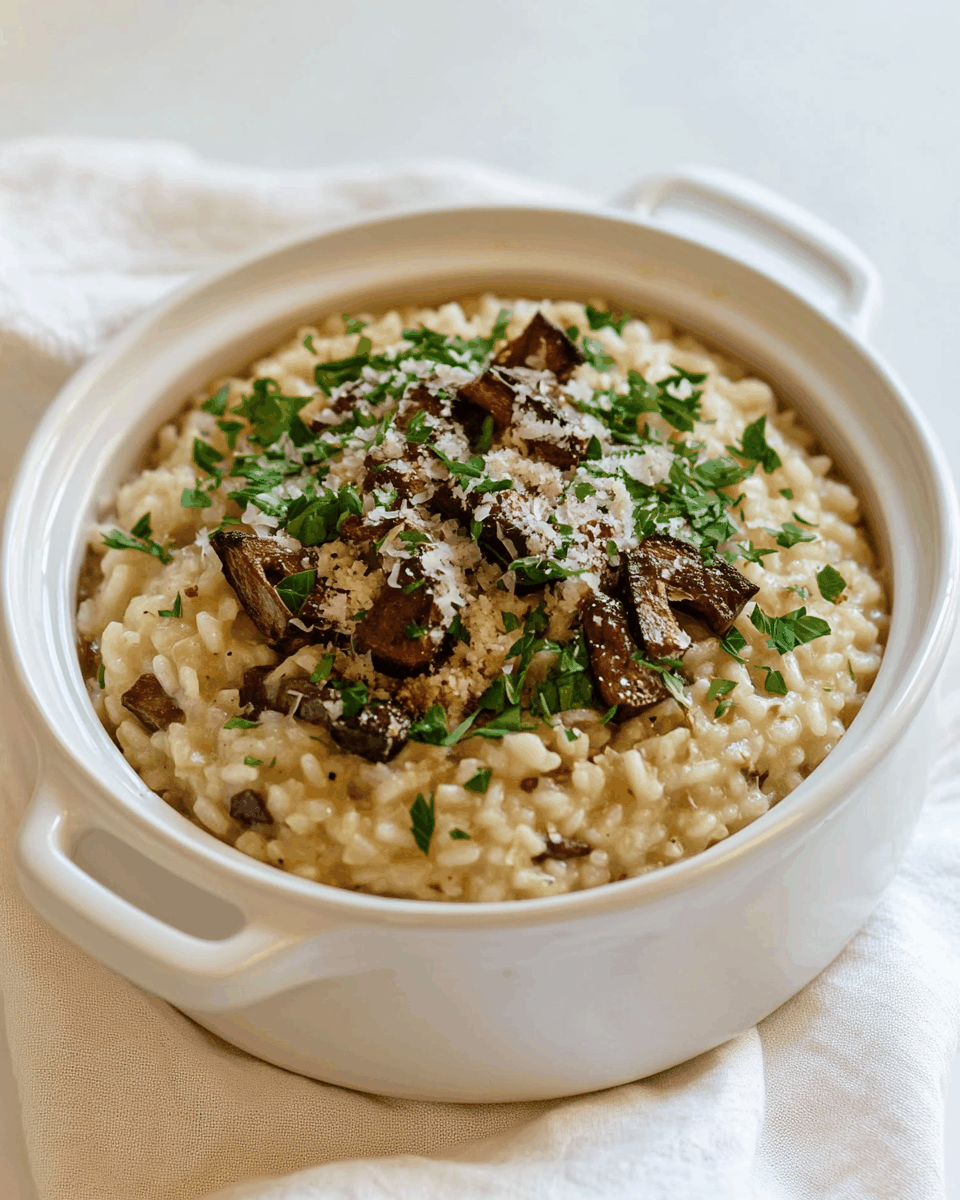
Making risotto is a rewarding process that requires patience and attention, but the results are worth the effort. Follow these detailed step-by-step instructions to create your perfect risotto:
- Begin by heating the vegetable broth in a saucepan over medium heat. It’s important to keep the broth warm throughout the cooking process, as adding cold broth can shock the rice and affect its cooking.
- In a large, heavy-bottomed pot or skillet, heat the olive oil over medium heat. Add the finely chopped onion and sauté for about 5 minutes, or until the onion is translucent and soft, stirring occasionally to prevent browning.
- Once the onion is softened, add the Arborio rice to the pot. Stir the rice into the oil and onion mixture for about 2 minutes, allowing it to toast slightly. This step enhances the nutty flavor of the rice.
- Next, start adding the warm vegetable broth to the rice, one ladleful at a time. Stir gently and continuously, allowing the rice to absorb the broth before adding more. This process helps to release the starches from the rice, creating the creamy texture typical of risotto.
- Continue to add broth one ladle at a time, stirring frequently. This process will take approximately 18-20 minutes. You will know the risotto is done when the rice is al dente, meaning it should have a slight bite to it, and the mixture is creamy.
- Once the rice is cooked to your liking, remove the pot from the heat. Stir in the unsalted butter and grated Parmesan cheese, mixing until everything is well combined and creamy. Taste and season with salt and black pepper as needed.
- If you are adding vegetables or proteins, incorporate them at this stage. For example, if you are using cooked asparagus or peas, gently fold them into the risotto until heated through. If using grilled chicken or shrimp, slice them and arrange on top.
- Let the risotto rest for a minute before serving. This allows the flavors to meld together beautifully.
- Serve the risotto warm, garnished with fresh herbs for an added touch of flavor and color.
Tips For Variations:
One of the wonderful aspects of risotto is its adaptability. Here are some unique ideas for variations that can enhance the flavor, texture, and presentation of your dish:
- Seasonal Vegetables: Incorporate seasonal vegetables to keep the dish fresh and exciting. For spring, consider adding peas and asparagus. In autumn, pumpkin or butternut squash can lend a wonderful sweetness and color.
- Herb Infusion: Experiment with different herbs such as thyme, rosemary, or tarragon. Adding a few sprigs while cooking the broth can infuse the risotto with aromatic flavors.
- Citrus Zest: A touch of lemon or orange zest added at the end of cooking can brighten the dish and enhance its overall flavor profile.
- Cheese Varieties: While Parmesan is traditional, feel free to experiment with other cheeses such as goat cheese, feta, or aged cheddar for a different taste and texture.
- Grains: If you want to try something different, consider using farro or quinoa instead of Arborio rice. These grains will provide a unique texture and flavor while still absorbing the broth.
- Nutty Flavor: Toasted pine nuts or walnuts can be sprinkled on top before serving for an added crunch and nutty flavor that complements the creaminess of the risotto.
- Budget-Friendly Options: For a more economical version, consider using frozen vegetables, which are often just as nutritious as fresh. Also, use less broth and incorporate a splash of water as necessary.
- Protein Alternatives: Beyond grilled chicken or shrimp, try adding cooked lentils or chickpeas for a vegetarian protein option. They add heartiness without overpowering the dish.
- Spicy Kick: If you enjoy heat, consider adding a pinch of red pepper flakes or freshly cracked black pepper to the dish for an exciting flavor boost.
Serving Suggestions:
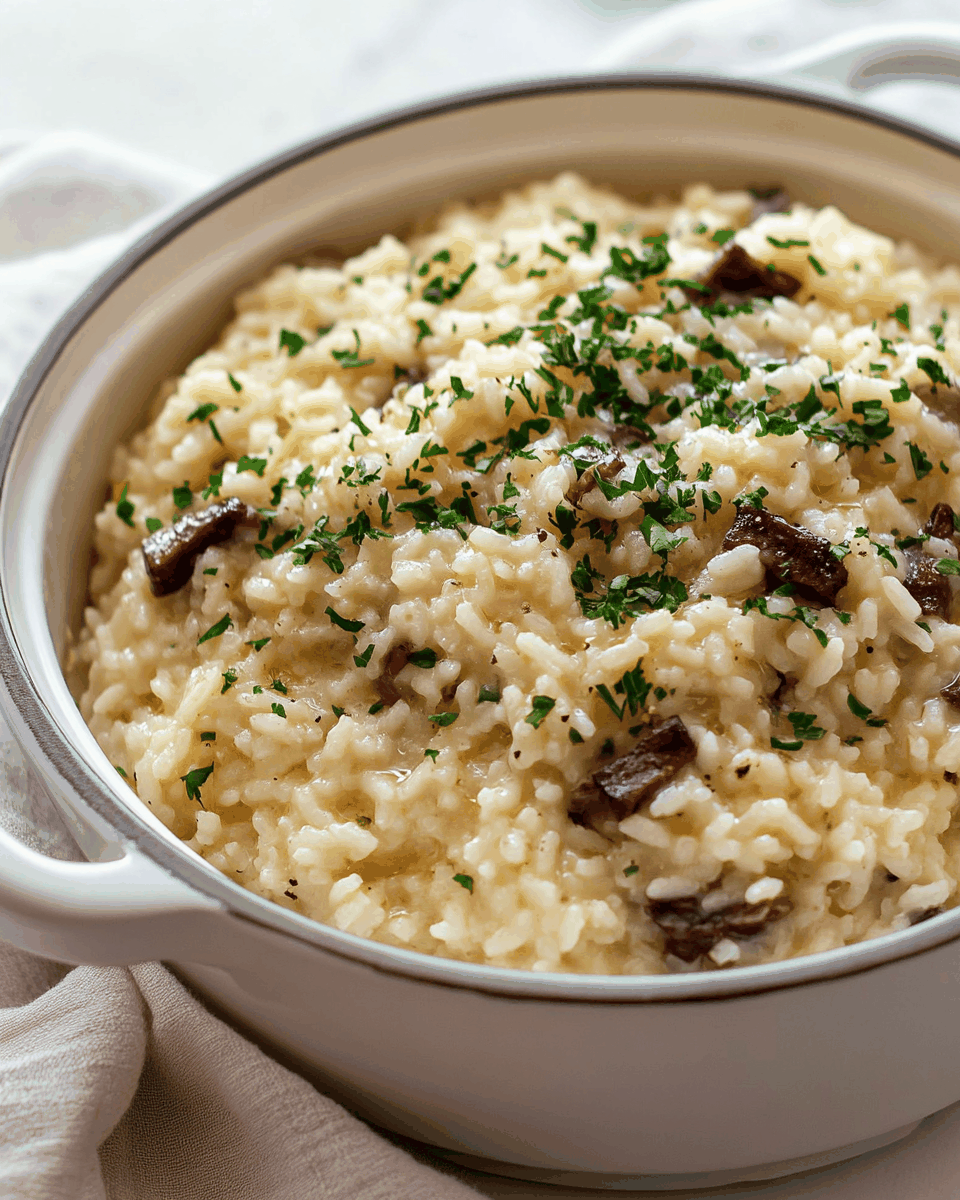
Serving risotto is an opportunity to showcase your culinary creation beautifully. Here are some creative serving recommendations that will elevate your dish:
- Plate Presentation: Use shallow bowls or plates to serve your risotto. A wide, shallow surface allows the creamy texture to spread out, creating an inviting appearance.
- Garnishes: Fresh herbs like chopped parsley or basil can add a pop of color and freshness on top of the risotto. A sprinkle of freshly grated cheese or a drizzle of high-quality olive oil can enhance both flavor and presentation.
- Accompaniments: Serve your risotto with a side of crusty bread or garlic bread for a comforting meal. A simple salad with a light vinaigrette can complement the richness of the risotto nicely.
- Portion Control: Consider serving risotto in smaller portions as an appetizer or first course. It’s rich and filling, so smaller servings allow guests to enjoy a variety of dishes during a meal.
- Layering Flavors: For a more complex dish, create a layered presentation by serving risotto with a sautéed vegetable medley on top or alongside a protein, allowing guests to mix and match flavors on their plates.
- Seasonal Themes: Tailor your serving style to the season. In the spring, add edible flowers as a garnish, while in the fall, consider serving the risotto in hollowed-out squash or pumpkins for a festive touch.
FAQ:
Can I make risotto in advance?
Risotto is best enjoyed fresh, but you can prepare it ahead of time by cooking it until just al dente. Store it in the refrigerator and reheat with a splash of broth to restore its creamy texture.
What type of rice is best for risotto?
Arborio rice is the most commonly used type for risotto due to its high starch content, which creates the creamy texture. Other options include Carnaroli and Vialone Nano, both of which also work well.
How do I know when my risotto is done?
Your risotto is done when the rice is al dente, tender but with a slight bite. The mixture should be creamy, not too dry or too soupy. Taste for doneness as you cook.
Can I freeze leftover risotto?
While it is possible to freeze risotto, the texture may change upon reheating. If you choose to freeze it, place it in an airtight container and use it within a month for the best quality.
What can I pair with risotto?
Risotto pairs wonderfully with a variety of sides. Consider serving it with grilled vegetables, a fresh salad, or protein options like grilled chicken, fish, or sautéed shrimp to create a balanced meal.

Classic Risotto
Equipment
- Saucepan
- Heavy-Bottomed Pot
- Ladle
Ingredients
Essential Ingredients
- 1.5 cups Arborio rice Short-grain rice essential for creamy texture.
- 4-5 cups Low-sodium vegetable broth Warm broth is crucial for cooking the rice.
- 1 medium Onion, finely chopped Adds sweetness and depth of flavor.
- 2 tablespoons Olive oil Used for sautéing the onions.
- 2 tablespoons Unsalted butter Adds richness to the dish.
- 1 cup Grated Parmesan cheese Enhances flavor; use freshly grated for best results.
- to taste Salt Essential for seasoning.
- to taste Black pepper Essential for seasoning.
- as needed Fresh herbs (parsley or basil) For garnish.
- optional Vegetables (asparagus, peas, mushrooms) Enhance flavor and nutrition.
- optional Protein (grilled chicken or shrimp) For a heartier meal.
Instructions
- 1. Heat the vegetable broth in a saucepan over medium heat and keep it warm.
- 2. In a heavy-bottomed pot, heat olive oil over medium heat. Sauté the chopped onion for about 5 minutes until translucent.
- 3. Add Arborio rice to the pot and stir for about 2 minutes to toast the rice slightly.
- 4. Begin adding warm vegetable broth one ladleful at a time, stirring continuously until absorbed.
- 5. Continue adding broth and stirring for about 18-20 minutes until the rice is al dente and creamy.
- 6. Remove from heat and stir in butter and Parmesan cheese until creamy. Season with salt and black pepper.
- 7. If using, fold in any optional vegetables or proteins at this stage.
- 8. Let the risotto rest for a minute before serving, garnished with fresh herbs.

